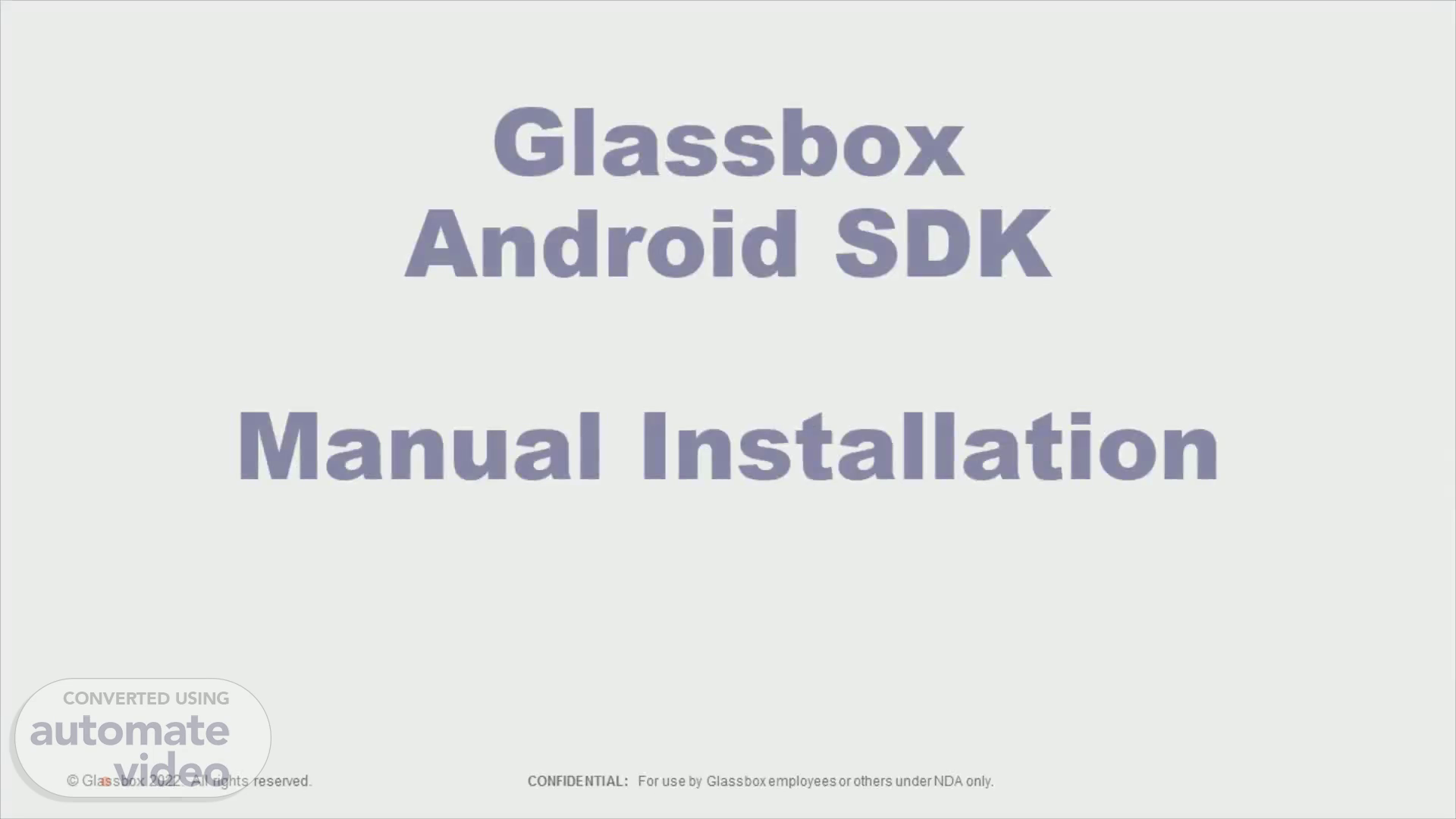
Glassbox Android SDK Manual Installation
Scene 1 (0s)
Glassbox Android SDK Manual Installation.
Scene 2 (6s)
Glassbox Android SDK fundamentals. What is Glassbox SDK? Glassbox SDK is used in order to track the user’s interaction with the application. How is it implemented? The SDK is integrated into the Android Project..
Scene 3 (19s)
Download the Glassbox Android SDK .. 1. Install/upgrade to the latest Android Studio - Link 2. Download the TMDB.zip from the following path: https://drive.google.com/file/d/1Ds7uwr9o0ZYhRu7iVWpk3X2z3cViF-Lg/view?usp=sharing 3. In the Android Studio open the TMDB Project from the following path: TMDb2022clean/ TMDb 4. Download the latest SDK - https://support.glassbox.com/hc/en-gb/categories/4402933667985-Version-release 5. Create a libs folder in the app folder (see Image 1). 6. From the extracted SDK directory add the android/glassbox.aar file and copy it into libs directory (see Image s 1 and 2)..
Scene 4 (59s)
Project build Gradle configuration old version. 1. On Android studio in the navigation tree choose Android icon instead of Project(TMDb) (see screen 1) 2. On the Android studio under Android choose file - Gradle Script/build.gradle (Module: TMDb.app) (see screen 1) 3. For using the libs folder you previously created, we will call it from the project build.gradle (Module: TMDb.app) file and will edit it (see screen 2). 4. In the file after the implementation section add the below lines (see screen 2): repositories }.
Scene 5 (1m 30s)
Text Description automatically generated. App build Gradle implementation old version.
Scene 6 (1m 52s)
Project build Gradle configuration new version. In the latest versions of Android studio, new applications create libs automatically and we don’t need the open access as the previous version with flatDir. 1. On the Android studio under Android choose Gradle Script/build.gradle (Module: TMDb.app) (see screen 1) 2. In the file after the implementation section add the below lines (see screen 2): implementation fileTree(dir: 'libs', include: ['*.jar']).
Scene 7 (2m 16s)
Configuration the App. 1. On the Android studio under app/Manifest/AndroidManifest.xml (see Image 1) 2. If either of the following lines is missing in the AndroidManifest.xml we have to add it under the manifest section after the package line (see Image 2): <uses-permission android:name="android.permission.INTERNET" /> <uses-permission android:name="android.permission.ACCESS_NETWORK_STATE" />.
Scene 8 (2m 39s)
Configuration the App. 1. On the Android studio under app/Manifest/AndroidManifest.xml (see Image 1) 2. Add the Glassbox service. In the <application> tag, add the following <service> tag lines: <service android:name="com.clarisite.mobile.GlassboxJob" android:exported="false" android:permission="android.permission.BIND_JOB_SERVICE"> </service>.
Scene 9 (2m 58s)
Start Glassbox in the main activity. Import all the relevant libraries of Glassbox clarisite. 1. On the Android studio under app/java/com.glassbox.themovie/ui/view/moviesActivity (see Image 1) 2. Add the following Glassbox lines under package com.glassbox.themovie.ui.view ; (see Image 2) import static com.clarisite.mobile.StartupSettings.StartupSettingsBuilder.aSettingsBuilder; import com.clarisite.mobile.ClarisiteService ; import com.clarisite.mobile.Glassbox ; import com.clarisite.mobile.SessionCallback ; import com.clarisite.mobile.VisibilityFlags ; import com.clarisite.mobile.exceptions.GlassboxRecordingException ;.
Scene 10 (3m 31s)
Start Glassbox in the main Activity. On the Android studio under app/java/com.glassbox.themovie/ui/view/moviesActivity (see Image 1) Add the following lines under onCreate section ( Image 1) In case of a different application or server, use the relevant AppId and \Report URL. try catch (GlassboxRecordingException e).
Scene 11 (3m 56s)
Run the application.. Graphical user interface, application Description automatically generated.